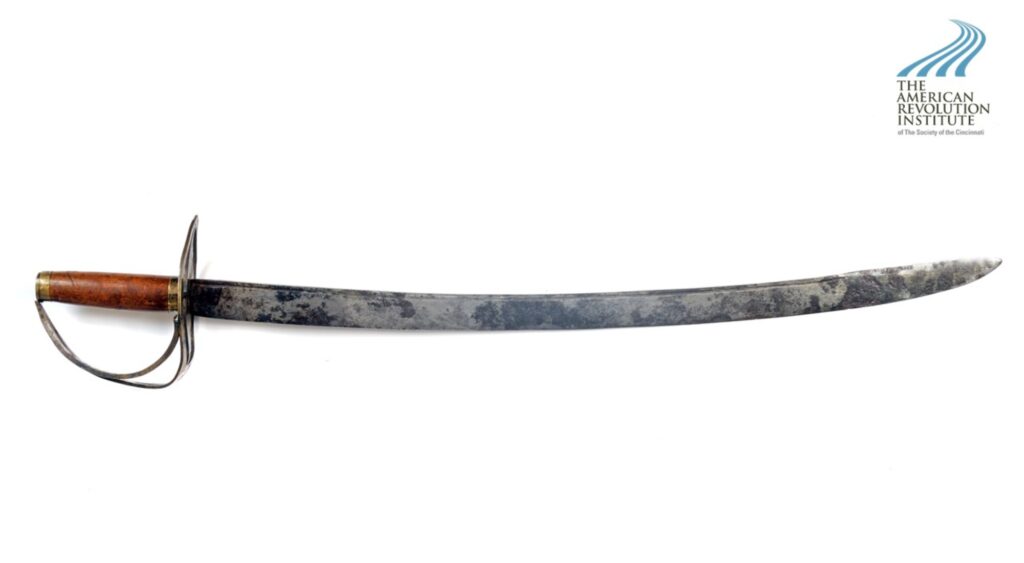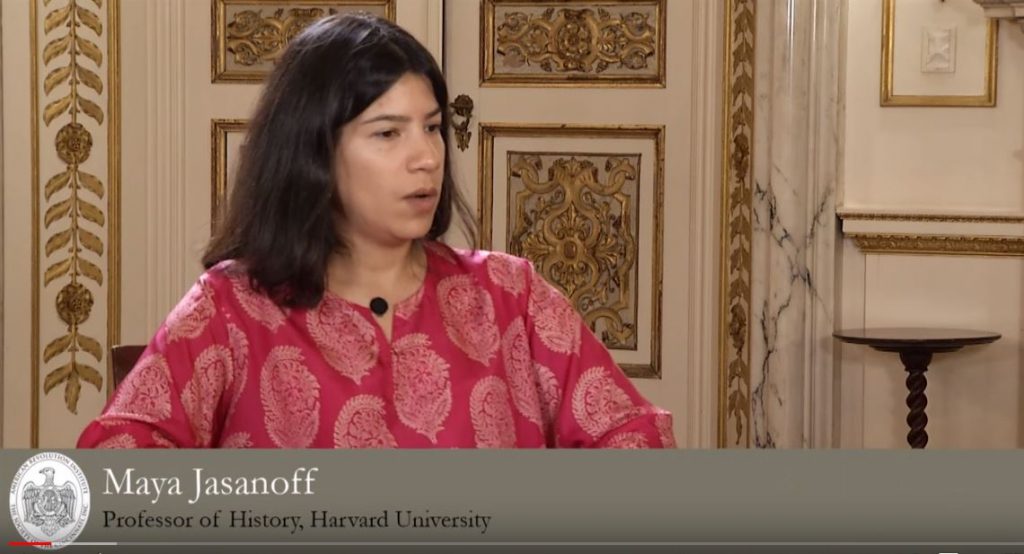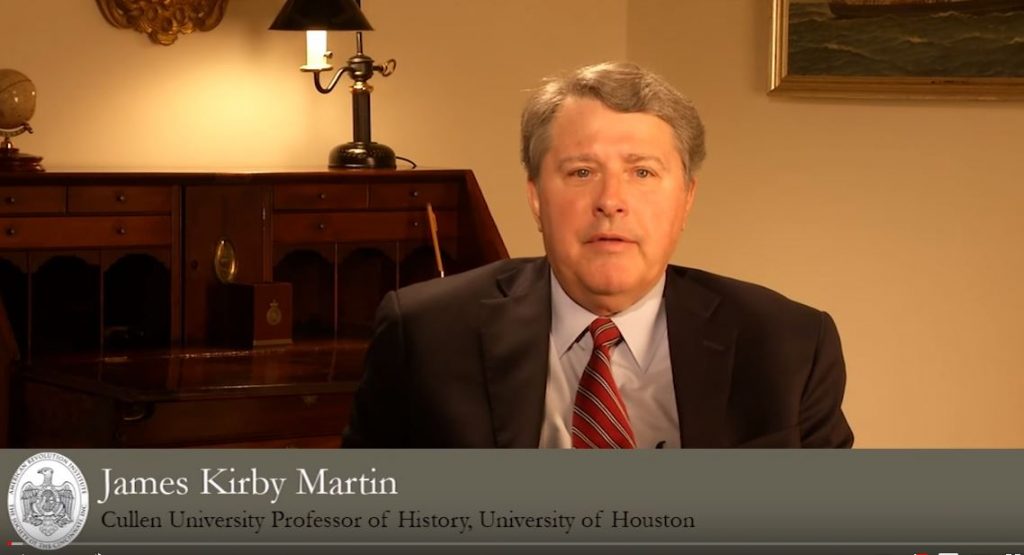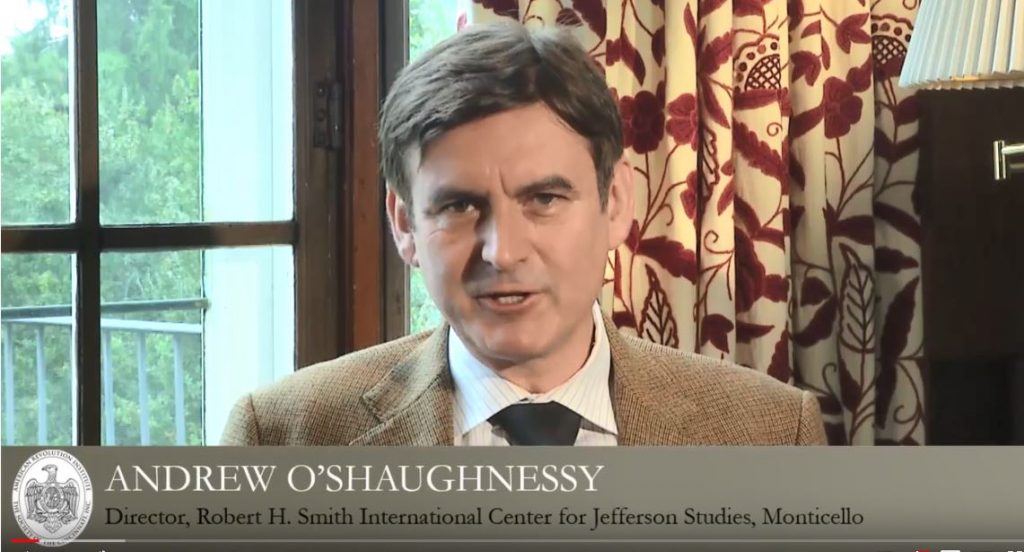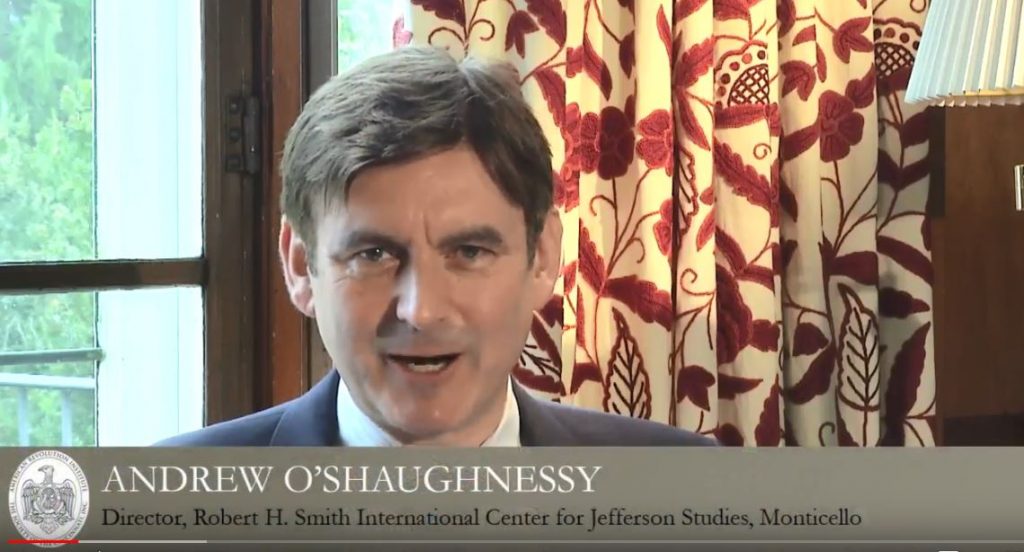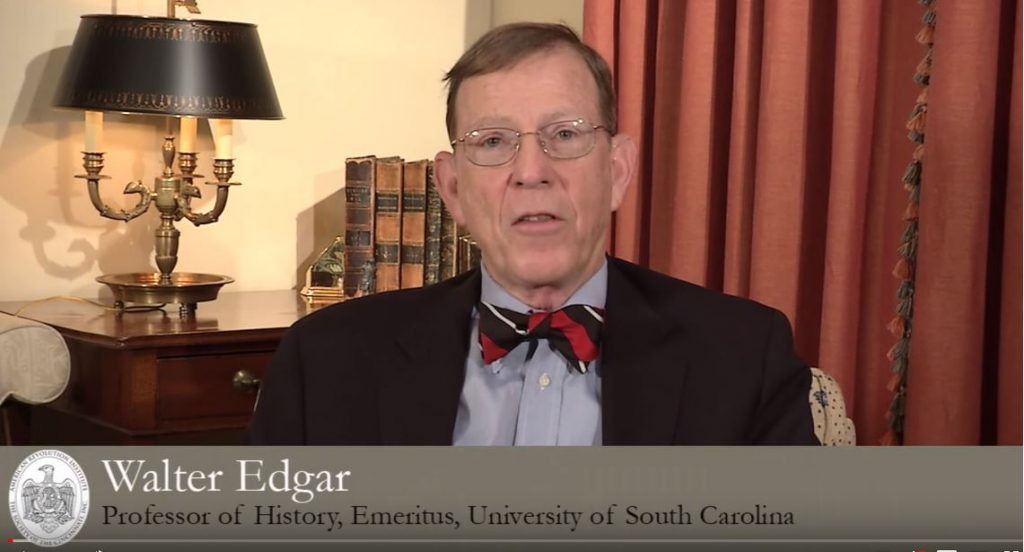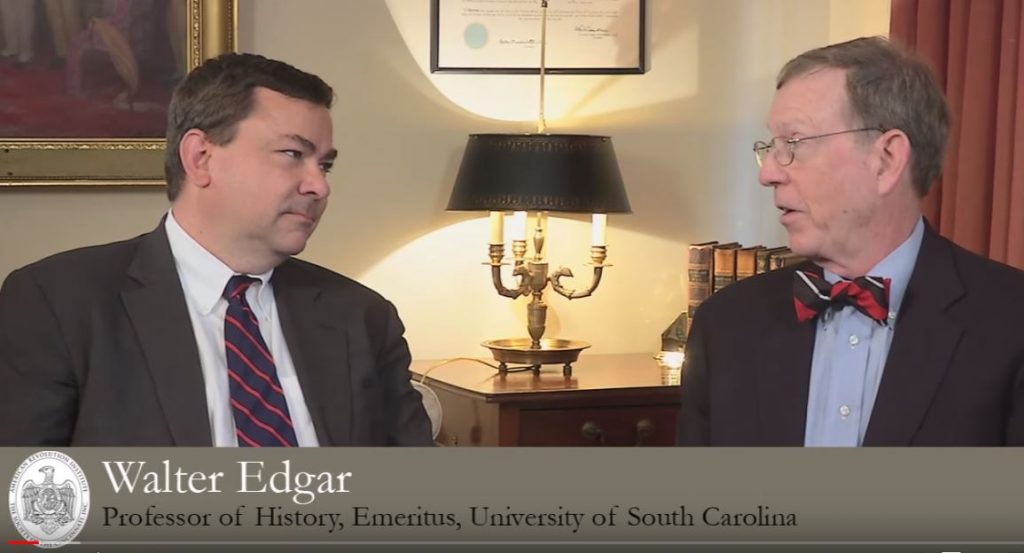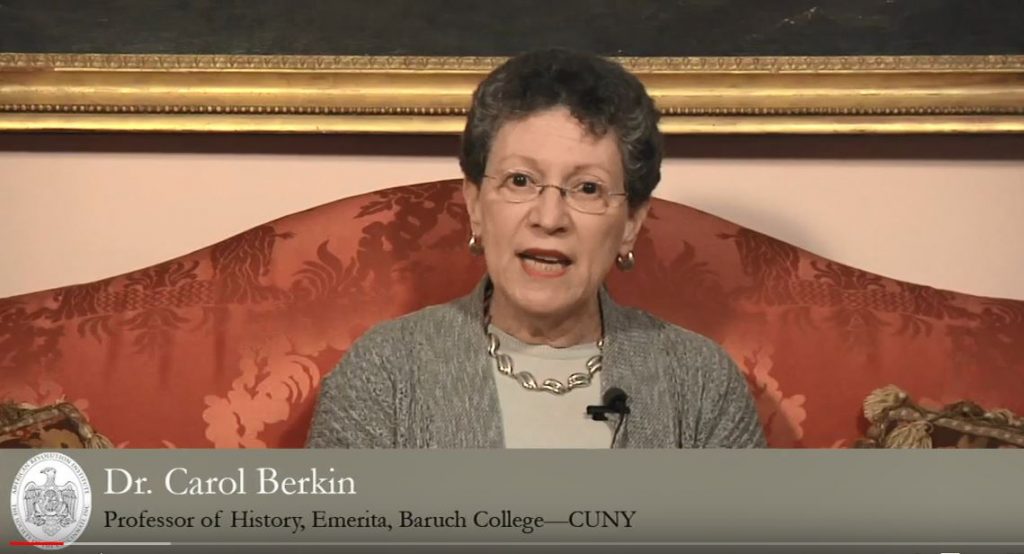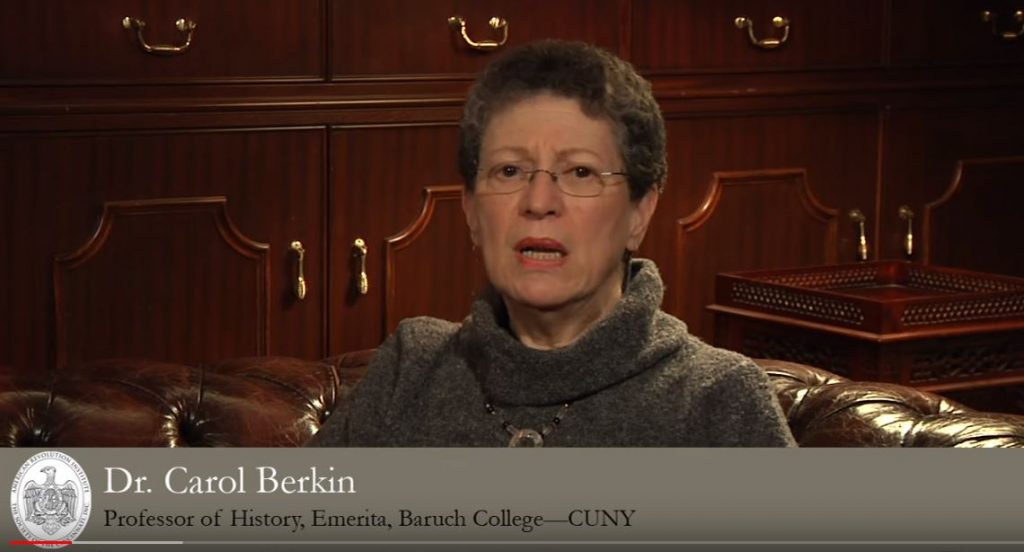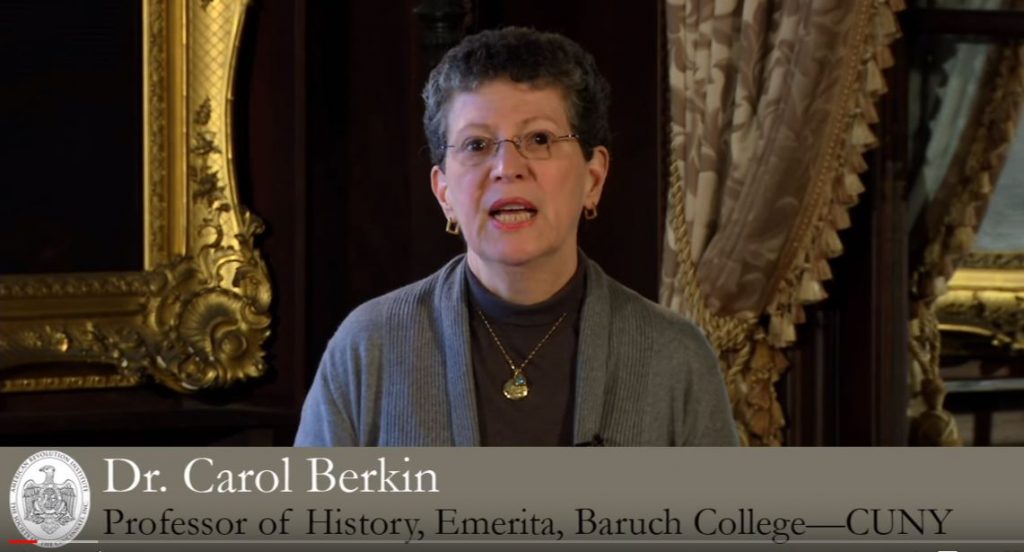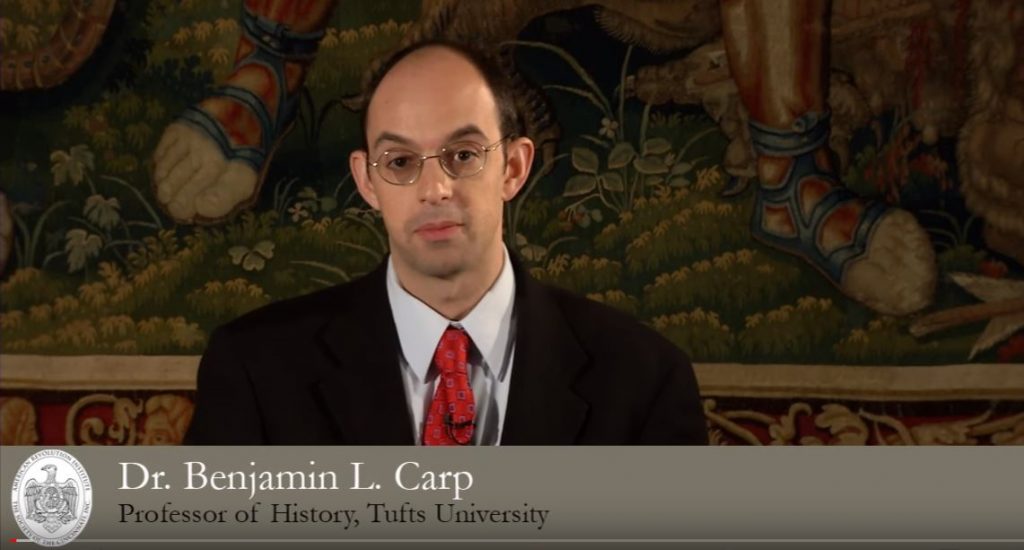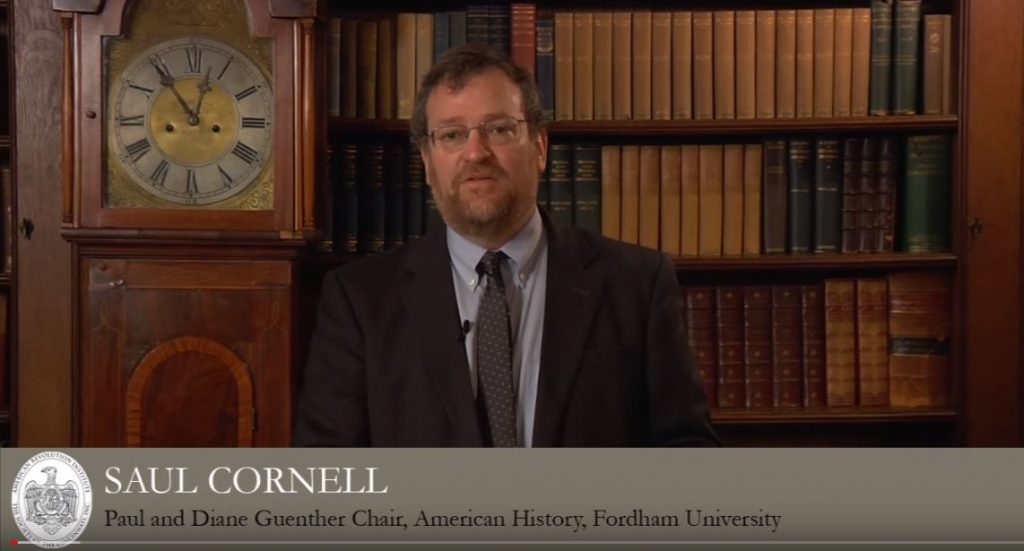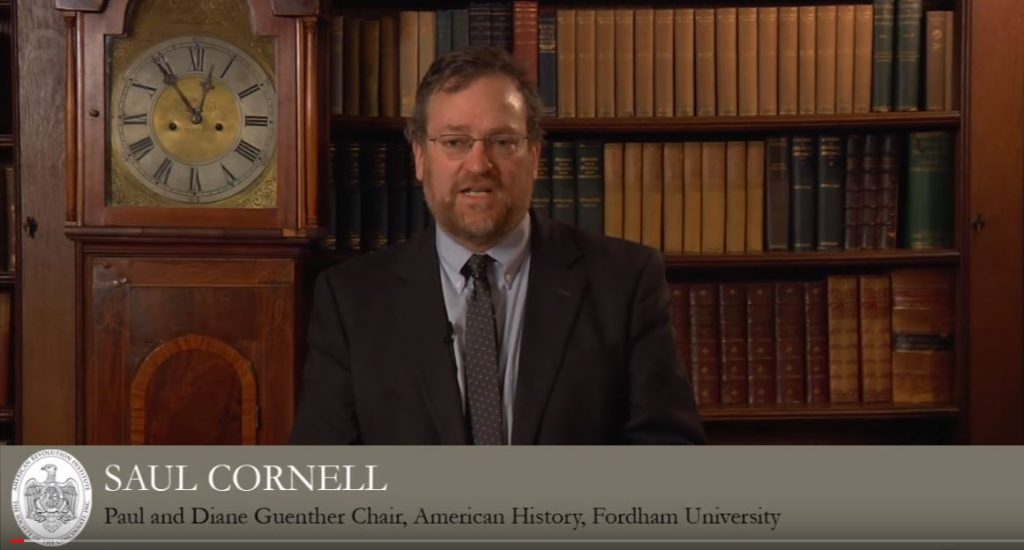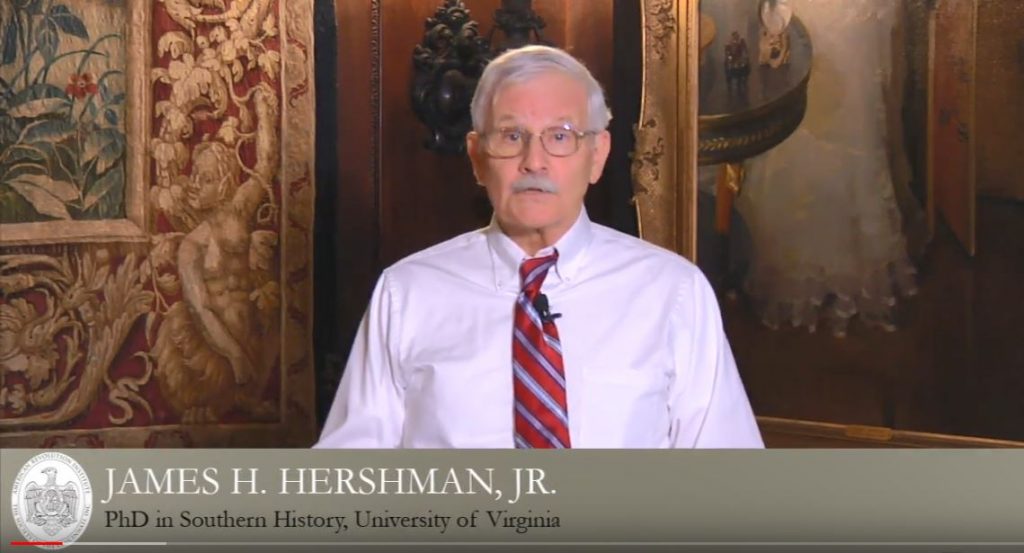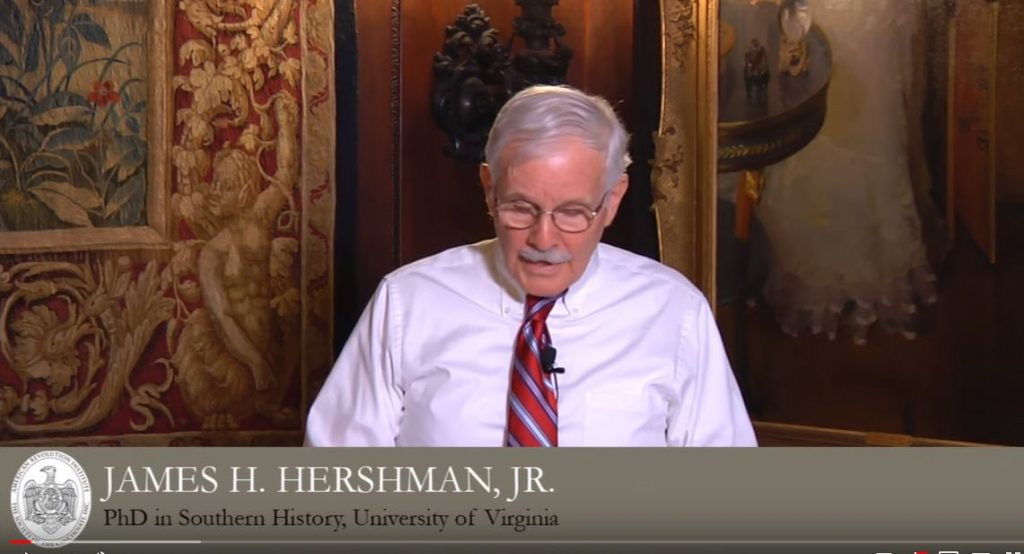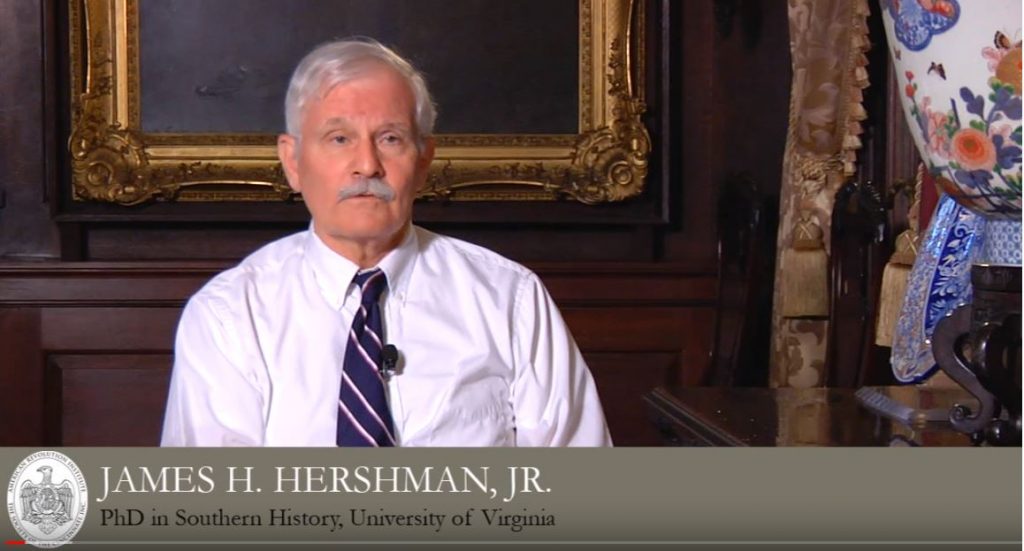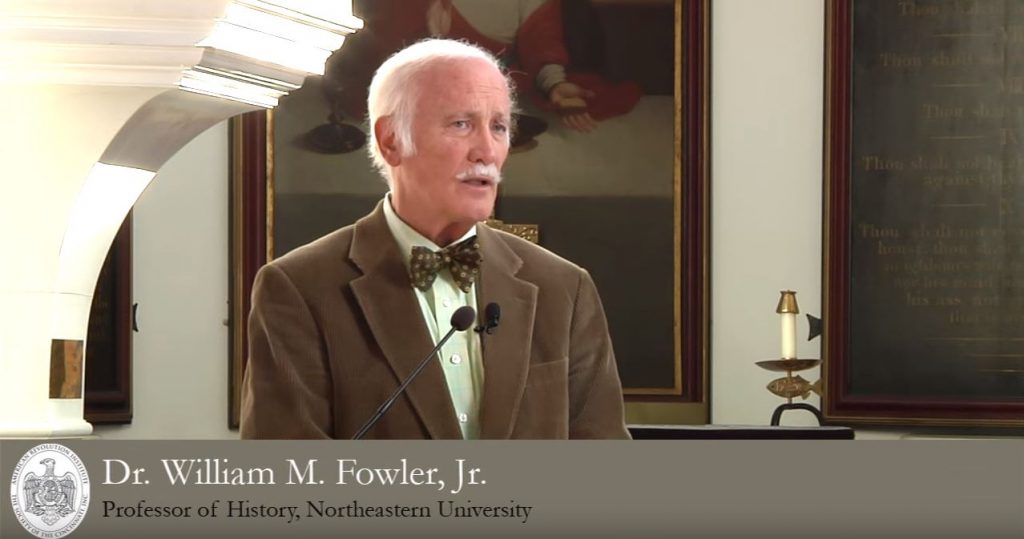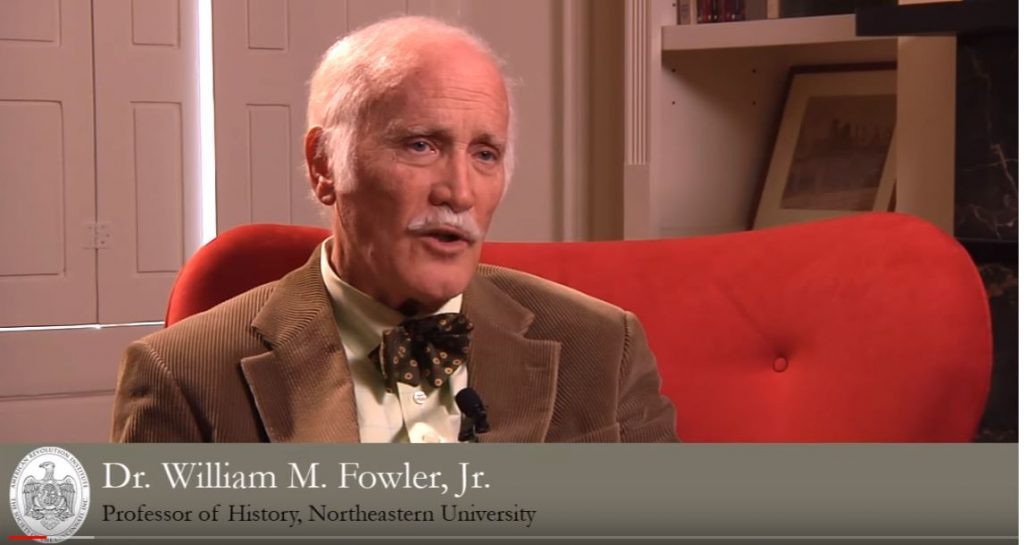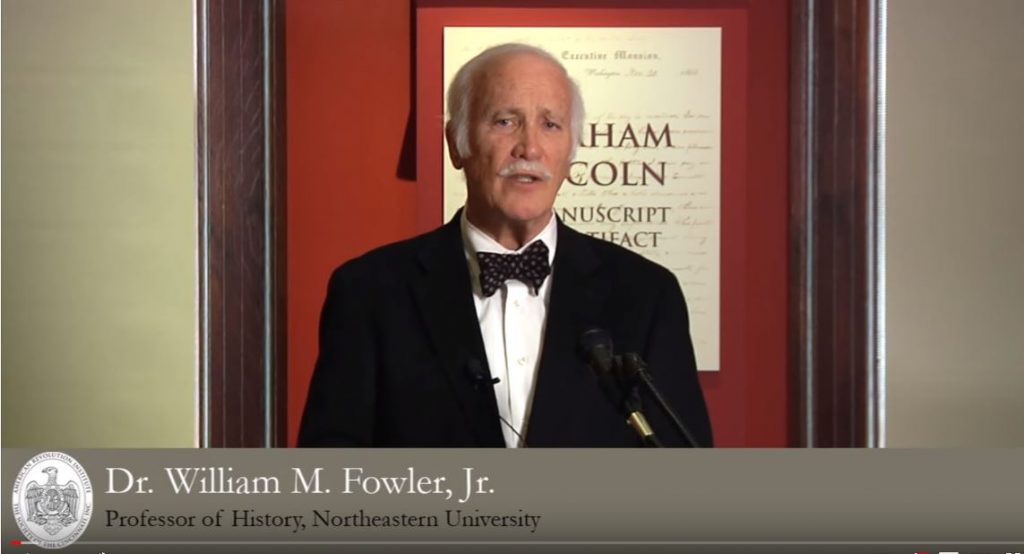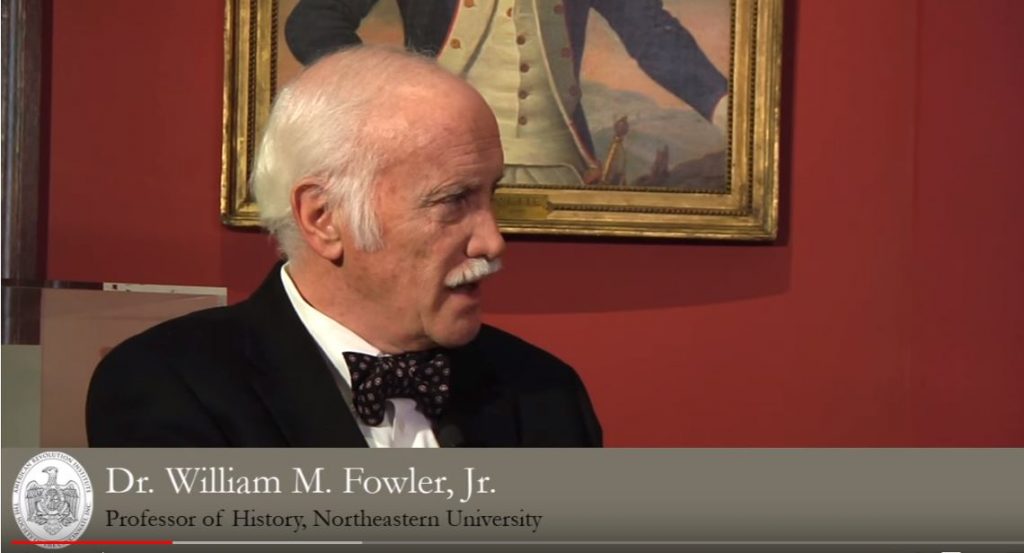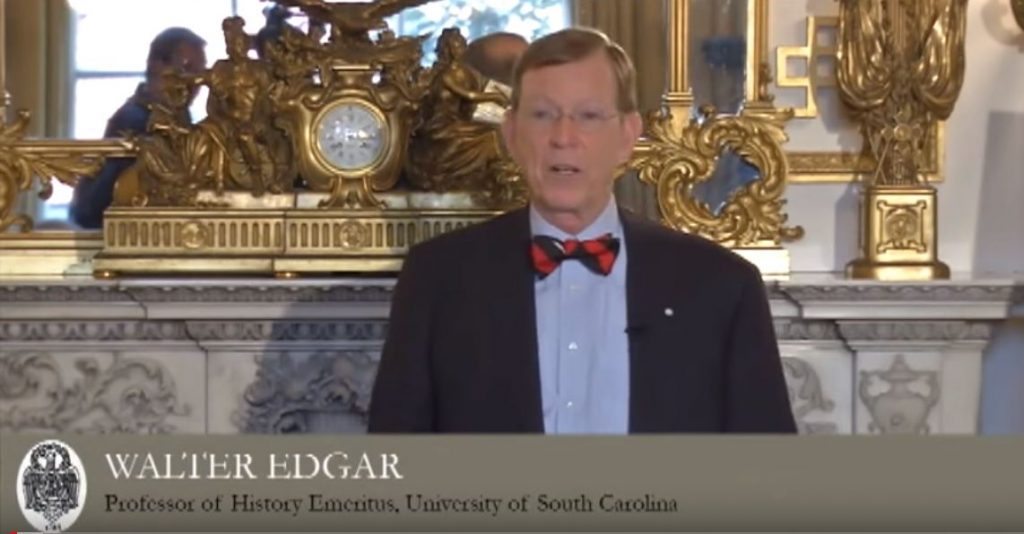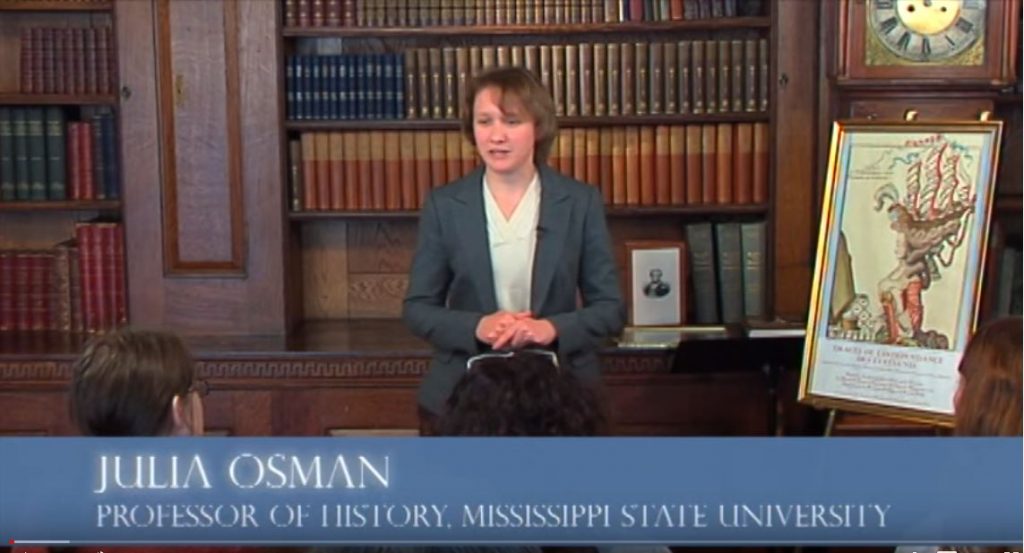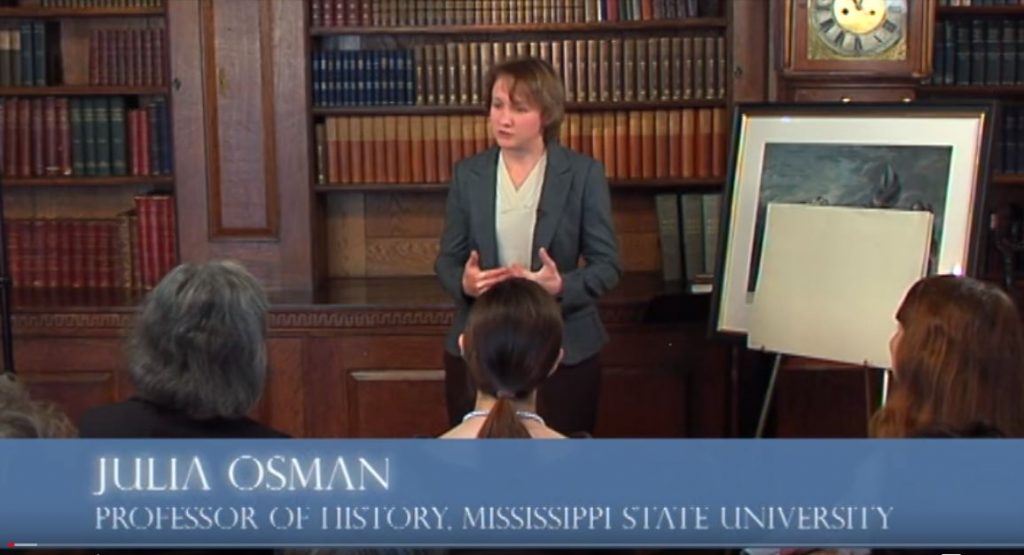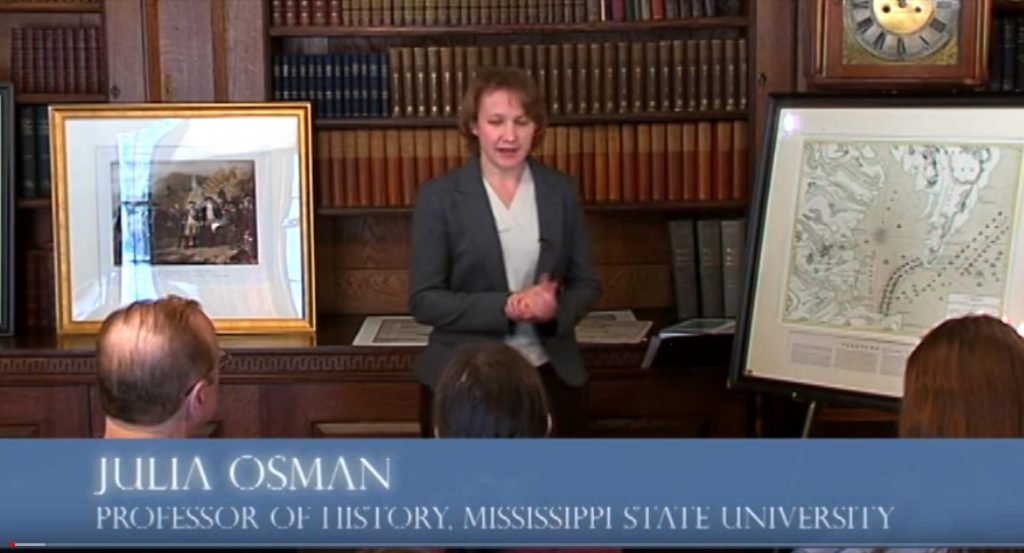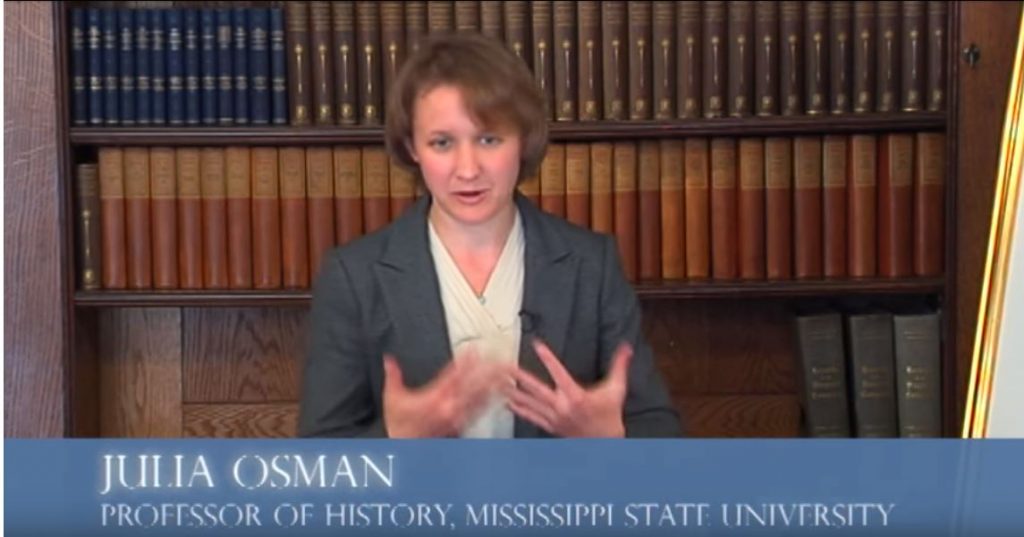Some of today’s leading—and most engaging—historians and scholars on the period are featured in the student-focused Conversations and Lectures for the Classroom. These videos explore the fundamental themes of the American Revolution and its legacy, and are available in full-length form as well as in shorter, chaptered segments ideal for use in the classroom or for students to watch on their own.
A Minute Man’s Hanger Sword and the Battles of Lexington and Concord
To commemorate the 250th anniversary of the beginning of the American Revolution, the Institute’s deputy director and curator, Emily Parsons, discusses an American-made hanger sword carried during the early months of the Revolutionary War by James Taylor, a…
Global Migration of American Loyalists
At the end of the American Revolution, sixty thousand Americans loyal to the British cause fled the United States and became refugees throughout the British Empire. Loyalists traveled to Canada, sailed for Britain, and journeyed to the Bahamas and the…
Oneida and Six Nations
The Oneida nation was the only one of the Iroquois Confederacy to ally with the Americans during the Revolutionary War. Congress formally honored the Oneida in 1794 for their service to the American cause, yet over time the Oneida sacrifice…
Benedict Arnold
American general Benedict Arnold secretly conspired with the enemy to surrender West Point and George Washington. Disaster for the Americans was thwarted only when Arnold’s co-conspirator, John André, was captured with plans of the West Point fortifications in…
A Well-Regulated Militia: History of the Second Amendment
Professor Cornell delves into the complicated history and interpretation of the Second Amendment to the U.S. Constitution. He argues that the amendment neither guarantees the right to own guns nor simply protects the rights of states to maintain militias…
An Empire Divided: Revolution and the British Caribbean
There were twenty-six colonies, not thirteen, in British America in 1776, and the majority of the colonies outside the mainland were in the Caribbean. Even though they shared many important similarities and connections with the mainland colonies, they did…
Lord North
The policies of Lord North, the British prime minister during the American Revolution, united the American colonies in rebellion. The Tea Act and the Coercive Acts solidified many colonists’ objections to what they considered British oppression. Dr. O’Shaughnessy examines…
Mel Gibson’s The Patriot: An Historian’s View
Mel Gibson’s film The Patriot, released in 2000, is a valuable teaching tool, as Professor Edgar argues in this look at its themes and accuracy. The film illustrates two important themes very well: the vicious, partisan nature of the…
The Southern Frontier in the American Revolution
The American Revolution did not begin and end in Boston. The backcountry in the South was an especially important region in the struggle for American independence. Professor Edgar examines the complicated factors that influenced the conflict in this region, including…
Native American Women and the American Revolution
The American Revolution was many revolutions, argues Professor Berkin, transforming the lives of Native Americans while the colonists fought for independence. For many Native Americans, victory meant increased pressure from white settlers. Native American women shared their peoples’ struggles for…
Revolutionary Transformation of Women’s Role in Society
The Revolution transformed the role of women in American society. Law and custom in colonial America reflected the idea that women were morally inferior to men. Mothers bore and nursed their infants, but the task of teaching children right from…
Women Who Followed the Continental Army
In the popular imagination, men conducted the Revolutionary War and the Continental Army and its encampments were an all-male environment. Professor Berkin reveals that, in reality, women and children accompanied the army and provided important services to sustain it…
African American Women and the American Revolution
African American women longed for freedom as much as anyone in revolutionary America, but few enjoyed its blessings. Liberty proved elusive, whether offered by the British or articulated by American revolutionaries. Some African American women in Virginia liberated themselves in…
Daughters of Liberty and Loyalist Women
Professor Berkin illuminates how women—both supporters of American liberty and loyalists to the Crown—participated in the Revolutionary War and the challenges they faced during the period. Patriot women maintained boycotts of imported goods, joined the army disguised as…
The Global Tea Party
The Boston Tea Party was not just a local story, Professor Carp argues, it was also a global story. The East India Company was becoming a territorial power in South Asia. Its principal import, tea, came from China and was…
Civic Virtue in Early America
Revolutionary Americans regarded civic virtue—a willingness to sacrifice personal interests for the good of the community—as vital to the preservation of republican institutions. The ideal of virtuous citizenship was rooted in classical antiquity and influenced American political thought…
From Articles of Confederation to US Constitution
After winning its independence, the new American republic faced internal threats to its survival political, economic and cultural differences resurfaced during the return to peacetime. These pressures prompted the nation’s leaders to abandon the loose confederacy formed during the…
U.S. Constitution as the Fulfillment of the Revolution
The creation and adoption of the U.S. Constitution was a fulfillment of the American Revolution, not a conservative counterrevolution. Professor Cornell details how James Madison, known as the architect of the Constitution, arrived at his proposal for the delegates…
The Revolutionary Challenge to Slavery
The Revolutionary War disrupted the institution of slavery in the United States. Lord Dunmore’s 1775 proclamation in Virginia promised freedom to men enslaved by rebel masters if they would fight in the royal army. The additional social unrest provided…
From the Revolution to the Civil Rights Movement
A powerful thread connects the American Revolution and the civil rights movement of the 1960s: the world-shaking proclamation of the Declaration of Independence “that all men are created equal” and have an undeniable right to “life, liberty and the…
Slavery and America’s Revolutionary Leaders
Slavery is the great American contradiction. The independence of the United States held the promise of liberty and equal rights for all, yet the country’s founding documents permitted slavery to endure. Indeed, many of the men who wrote and…
Revere and Longfellow
“Listen my children and you shall hear.” With those lines, Henry Wadsworth Longfellow began his epic poem about Paul Revere’s ride on the night of April 18, 1775. When it was first published in 1861, the poem was an…
The Revolutionary War at Sea
Battles at sea played a key role in securing American independence, even though the size and prowess of the Royal Navy dwarfed that of the nascent Continental Navy. John Paul Jones, who defeated the HMS Serapis, became the great hero…
The Critical Time After Yorktown
Many people assume that the Revolutionary War ended with the surrender of the British army at Yorktown in October 1781. In fact, the war continued for two more traumatic years. During that time, the Revolution came as close to being…
Hardships of the Continental Army
The soldiers of the Continental Army suffered extreme hardships during the Revolutionary War. Beyond experiencing the terror of combat, the troops were chronically undersupplied. The close of the war brought further anxiety as many of the soldiers had not been…
The Boston Massacre and the Boston Tea Party
The people of Massachusetts had more power over their own government than anyone else in the British Empire. Bitterness and resentment festered among these independent-minded colonists as the Crown raised taxes on American goods and sent soldiers to enforce…
The South in the American Revolution
For the latter part of the American War of Independence, the British focused on taking control of the South. They captured Savannah and Charleston and launched a campaign to crush rebels in the Carolinas and Virginia. George Washington responded to…
Rochambeau and Lafayette
The marquis de Lafayette and the comte de Rochambeau were each vital to the fight for American independence, but they took different paths to their service in the American war. Unlike most other French officers, Lafayette did not seek a…
The Seven Years’ War
Winston Churchill called the Seven Years’ War the first world war. Yet, Americans typically think of this conflict only in terms of its North American theater, where it is most often referred to as the French and Indian War. The…
Victory at Yorktown
In August 1781, British commander Lord Cornwallis moved his troops to Yorktown, Virginia, hoping he could more easily receive supplies and reinforcements via the York River, near the Chesapeake Bay. Professor Osman details the events that followed, leading to the…
King Louis XVI
King Louis XVI’s people called him the “Liberating King” for his support of the American Revolution, so how did he end up beheaded at the guillotine? Professor Osman assesses Louis XVI’s conduct during the American and French Revolutions…
